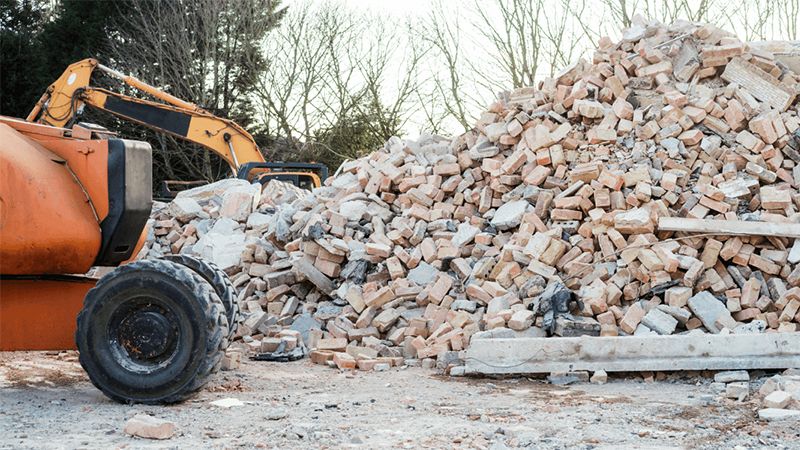Concrete is everywhere around us—whether it’s the driveway at home, the foundation of a new office building, or the worn-out sidewalk at the park. It’s strong, long-lasting, and dependable, but when the time comes to repair, replace, or completely remove it, the process can feel daunting. After all, concrete isn’t exactly known for being easy to break apart. The good news is that modern methods make removal much safer, quicker, and more efficient than ever before.
This article examines practical solutions for managing old or unwanted concrete in both commercial and residential settings. We’ll walk through common situations, techniques, and benefits, using real-life examples that highlight why choosing the right removal approach can save time, money, and stress.
Why Concrete Removal Matters
At first glance, concrete seems indestructible. Sidewalks, patios, parking lots, and industrial flooring often last for decades. But even the toughest material eventually cracks, shifts, or becomes outdated. A driveway riddled with potholes can be unsafe for your family’s car. A warehouse floor with uneven slabs can pose hazards to both workers and equipment. Even small cosmetic issues, such as a patio with visible cracks, can impact a property’s overall appeal.
Removing damaged or outdated concrete is often the first step in upgrading or rebuilding a structure. For homeowners, it might mean replacing an old patio with a fresh outdoor living space. For business owners, it could mean clearing a foundation to prepare for a new structure. In city projects, removal ensures that public spaces, such as sidewalks and parks, remain safe and accessible.
In short, removal isn’t just about tearing things down—it’s about making room for something better.
Techniques Used in Concrete Removal
Concrete removal has evolved significantly from the days of simple sledgehammers and wheelbarrows. Today, specialists rely on a mix of manual labor, heavy machinery, and innovative tools to make the process faster and safer.
1. Manual Demolition
This method involves handheld tools such as jackhammers, sledges, or pry bars. It’s often the go-to choice for small jobs around the house, like removing a section of a garden path or part of a garage floor. While cost-effective for smaller areas, it can be labor-intensive and time-consuming on larger projects.
2. Machine-Assisted Removal
For larger slabs and thicker foundations, machinery is usually essential. Excavators, skid-steers, and bulldozers equipped with hydraulic hammers can break apart concrete quickly and haul it away with ease. For instance, a shopping center replacing its entire parking lot wouldn’t dream of relying on manual work—it would require heavy-duty machines to finish the job efficiently.
3. Cutting & Sawing
Concrete cutting is often used when precision is necessary. Diamond-blade saws allow workers to create clean cuts without damaging nearby structures. Think of a homeowner who wants to remove just part of a patio to install a garden pond. Cutting provides control, leaving surrounding slabs intact.
4. Chemical & Pressure Methods
For situations where noise or vibration must be minimized—like in hospitals or schools—contractors may use expanding chemical agents. When poured into drilled holes, these agents cause the concrete to crack from within. Similarly, high-pressure water jets (hydrodemolition) can strip concrete without dust or major vibrations, making it a safer choice for sensitive environments.
Commercial Projects: Big Jobs, Bigger Challenges
Commercial projects usually involve much larger scales and stricter requirements. A warehouse floor removal, for example, must account not only for the size of the concrete but also for safety regulations, equipment coordination, and waste disposal.
Consider the example of an office building that requires a new foundation due to structural concerns. The removal process might involve excavators breaking apart the base, trucks hauling tons of debris, and teams coordinating around other construction activities. Safety is paramount since multiple crews are often on-site at the same time.
Another commercial example is shopping malls. A cracked multi-level parking garage can’t simply be patched up in spots; sections often need to be removed and replaced to ensure long-term durability. In such cases, efficiency means minimizing downtime for businesses that rely on customer access.
These large-scale jobs highlight the importance of professional planning. Without proper coordination, removal could delay entire construction schedules and lead to increased costs.
Domestic Projects: Closer to Home
On the residential side, the goals may be smaller, but they are equally meaningful. Picture a family wanting to replace their cracked driveway before the rainy season worsens the damage. Or a homeowner deciding to take down an old backyard slab to install a swimming pool. In these cases, the focus is on balancing affordability, safety, and convenience.
For domestic projects, efficiency doesn’t just mean speed. It also means minimizing disruption to daily life. Neighbors appreciate less noise, families appreciate quick cleanup, and homeowners benefit from professionals who can get the job done right the first time. That’s why even for smaller-scale projects, hiring experienced teams with the right tools can make all the difference.
Sustainability in Concrete Removal
One of the most important considerations today is what happens after the concrete is removed. Rather than sending tons of rubble to landfills, much of it can be recycled. Broken concrete can be crushed into aggregate, which is then used in road construction, new concrete mixes, or landscaping projects. This practice not only reduces environmental impact but also saves costs on materials.
For example, a demolished sidewalk may find a second life as the base layer for a new highway. Similarly, recycled concrete aggregates are commonly used as fill material in construction sites. These sustainable solutions benefit both businesses and communities, aligning with broader efforts to reduce construction waste.
Safety and Regulations
Concrete removal is not just about physical work; it’s also about responsibility. Dust, debris, and noise can affect people nearby. Proper protective gear, dust suppression methods, and waste disposal practices are essential. In commercial sites, contractors must comply with workplace safety standards, while homeowners should ensure that local regulations on waste disposal are followed.
Failing to fulfill these responsibilities can result in fines, project delays, or even accidents. That’s why experienced removal teams always integrate safety and compliance into their processes.
Finding the Right Team
Whether you’re a homeowner removing a small patio or a business tackling a massive floor replacement, the key to efficiency lies in choosing the right professionals. A qualified team knows which method to use, how to minimize disruption, and how to handle waste responsibly.
For those considering their options, professional services specializing in commercial & domestic concrete removal provide tailored solutions. From small residential jobs to large-scale commercial projects, they bring the right mix of expertise and equipment to get the work done effectively.
Final Thoughts
Concrete removal may sound like a purely destructive process, but in reality, it’s about building a better future. By clearing away the old, we create room for safer driveways, stronger foundations, modern public spaces, and sustainable reuse of materials.
From manual demolition to machine-assisted solutions, from residential driveways to industrial warehouses, efficient removal ensures that projects stay on track and communities benefit in the long run. With the right approach, what seems like a tough, noisy job becomes an organized step toward renewal.
For readers who want to explore more about the material itself, its durability, and its role in shaping our cities, this article on concrete offers a fascinating perspective.






